It doesn’t matter what age you are or how expert of a swimmer you are, everyone should have their own life jacket or PFD when taking part in any kind of water activities or sports.
When talking about life jackets and PFDs, both are safety equipment but with some differences. Here we’ll see how exactly they differ and what can be your better and safer choice based on your own needs.
What’s the Difference Between Life Jackets and PFDs?
Comfort
Life Jackets
Larger and bulkier than PFDs, life jackets are not designed for prolonged use.
PFD
PFDs are more comfortable than life jackets as they are designed for prolonged use and don’t wear off so easily. They are smaller and less bulky with an extensive range of types, sizes, and colors.
PFDs are designed and made especially for water activities like sailing, kayaking, canoeing, personal watercraft (PWC) riding, and even angling.
Winner
PFDs since you can wear them comfortably for long hours.
Safety
Life Jackets
When compared to PFDs, life jackets provide a higher level of protection. They come in red, orange, or yellow colors and contain SOLAS-grade reflective strips. These strips accompanied by the bright color allow people to spot them in the water quite easily.
Life jackets have at least 30 lbs of flotation and are designed to turn an individual into a face-up position. They generally come with a whistle and are reversible.
PFD
PFDs are made to keep a conscious person afloat and help with buoyancy in the water. They are ranked by 1, 2, and 3 flotation levels.
PFDs don’t usually provide the same level of protection as life jackets for remaining afloat and turning unconscious users onto their back so they can breathe.
Only type 1 is classified as an old-style life jacket, with neck assistance to keep the wearer’s face upward.
Winner
Life jackets win this round with their more safety features.
Types
Life Jackets
There are 9 different types:
- Offshore life jacket
- Near-shore buoyant vest
- Flotation aids
- Throwable life jackets
- Special use device
- SOLAS life jackets
- Standard life jackets
- Small vessel life jackets
- Inflatable life jackets (2 styles- Vest Style and Pouch Style)
PFD
There are 2 types-
- Standard PFD
- Inflatable PFD
Winner
Life jackets come in a number of varieties to choose from.
Material
Life Jackets
The inner part of a life vest is made in 3 different classifications-
a) Naturally Buoyant
Its inner part is made of plastic foam like polyvinyl chloride or polyethylene though in the past, they had materials like cork, balsa wood, or kapok.
b) Inflatable
They are filled with cartridges of carbon dioxide gas sewn into them.
c) Hybrid
These life jackets include both natural buoyancy and manual inflation. The outside shell usually has nylon or vinyl materials.
PFD
They are mainly made of nylon or Cordura exterior shells with foam padding installed between the shell walls. The foam is Gaia, Kapok, or PVC and PFDs are coated on one or two sides with Thermoplastic Polyurethane.
Winner
PFD is the winner as its material is more durable.
Price
Life Jackets
| Life jacket types | Price (approx.) |
| Offshore life jacket | $50-$80 |
| Near-shore buoyant vest | $10-$20 |
| Flotation aids | $25-$30 |
| Throwable life jackets | $40 |
| Special use device | $100-$200 |
| SOLAS life jackets | $70 |
| Standard type life jackets | $20-100 |
| Small vessel life jackets | $220-$300 |
| Inflatable life jackets | $60-$110 |
PFD
| PFD Types | Price |
| Standard PFD | $10-$350 |
| Inflatable PFD | $80-$270 |
Winner
Life jackets are cheaper.
Types
Life Jackets
There are 9 types-
1. Offshore life jackets
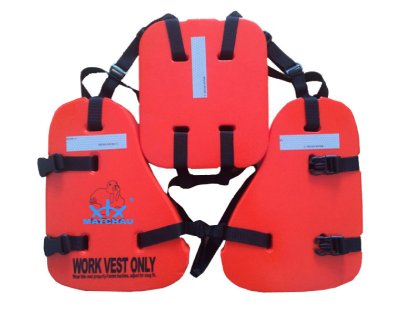
Previously recognized as “Type I” life jackets, these offer the highest buoyancy of around 22 pounds. They are heavy to wear and are generally used on many commercial-type vessels.
These lifejackets come with a unique benefit. They can turn an unconscious person face-up automatically in the water. Despite their satisfactory performance, they aren’t much handy for recreational water vessels as their hefty shape limits mobility.
2. Near-shore buoyant vest
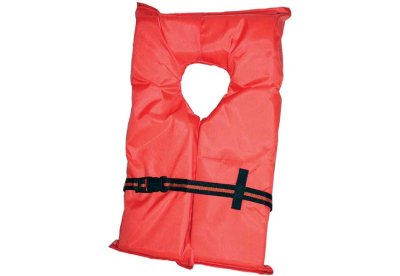
The buoyancy count of Near-shore buoyant vests AKA “Type II” life jackets starts at 15.5 pounds. The Near-shore buoyant vest is the cheapest life jacket and is made to satisfy United States Coast Guard safety necessities.
They come in a “horse collar” shape and are popular for their simple construction. You will not find a life jacket that works better than the Type II life jackets.
A few non-harness inflatable life jackets that inflates with water are also regarded as Type II life jackets as well. They can offer a buoyancy of around 33.7 pounds.
3. Flotation aids
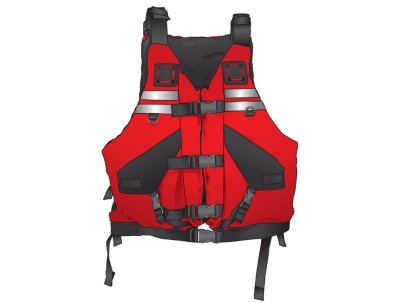
These life jackets also provide at least 15.5 pounds of buoyancy. They were previously labeled as “Type III” life jackets, People call them “ski vests.”
Flotation aids are available in an extensive variety of styles and are quite comfortable. Some models have specifically been designed for paddling, tow sports, sailing, and fishing.
The sailboat or powerboat models offer some degree of protection from hypothermia, along with medium buoyancy. You’ll get either a front entry and buckle, or a buckle-and-zipper closure in your flotation aids.
These life jacketrs are buit for sensible wearers and provide with a good chance of rescue.
They will not give assurance to turn an unconscious victim face-up in the water. These jackets are suitable for near-shore. However, they don’t provide adequate flotation for offshore use.
A few non-harness and manually activated inflatable life jackets are regarded as flotation aids as well and they can offer around 33.7 pounds of buoyancy.
4. Throwable life jackets
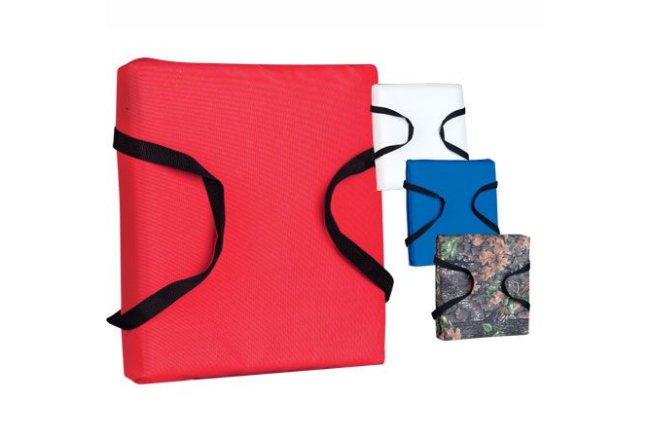
These life jackets were formerly known as “Type IV”, and take the form of a ring or flat cushion that can be thrown at someone who falls unpredictably in the water. The users are supposed to hold onto these rather than wearing them like clothing.
These life jackets provide at least 16.5 pounds of buoyancy.
5. Special use device
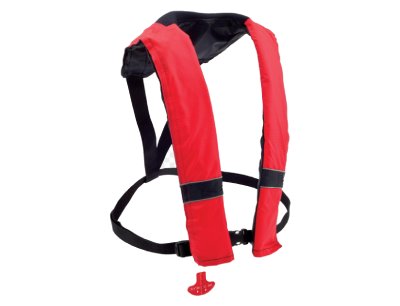
These were previously known as “Type V” life jackets and frequently incorporated into whitewater rafting vests, flotation jackets, and even sailboard harnesses. Some of them are helpful to inshore or offshore boaters.
The most notable one among them is the “dinghy” type vest, which is made for sailing a tiny dinghy. In addition, special use devices include any inflatable life jacket that has a built-in protection harness, as you’ll need extra training or guideline to use the harness.
6. SOLAS life jackets
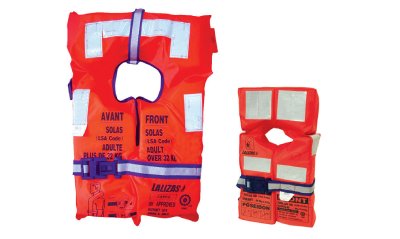
These lifejackets are available in 2 sizes. The first size is for persons more than 70 pounds, and the other one is for persons below 70 pounds. They would turn you on your back in seconds to keep your face out of the water, whether you are unconscious or not. You can get these jackets only in the keyhole model.
7. Standard type life jackets
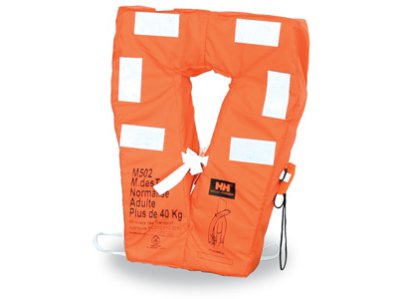
These types of lifejackets have more sluggish performance in the water compared to SOLAS lifejackets. They would turn you on your back to keep your face out of the water, even if you are not in your senses, though not as quick as SOLAS lifejackets.
There are 2 sizes available. One for persons more than 88 pounds and the other one for below 88 pounds. These lifejackets are only available in the keyhole model.
8. Small vessel life jackets
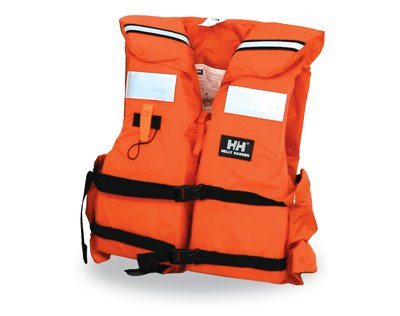
These lifejackets have the slowest performance in the water. They will turn you on your back to keep your face out of the water, even if you are not in your senses, but might do so very slowly. There are 3 available sizes.
The first one for persons more than 90 pounds, the second one for 40-90 pounds, and another one for below 40 pounds. You will get these lifejackets in 2 models, which are the keyhole model and the vest model.
9. Inflatable life jackets

These lifejackets have been made for wearability and offer the maximum level of floatation without interrupting free movement. There are 2 styles.
10. Vest style
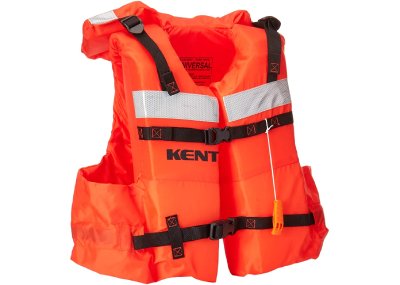
This style will be inflated manually or automatically with a carbon dioxide system. The automatic inflatable lifejackets are made to inflate while submerged. In addition, they have a manual inflation system that will be triggered by pulling a toggle.
11. Pouch style
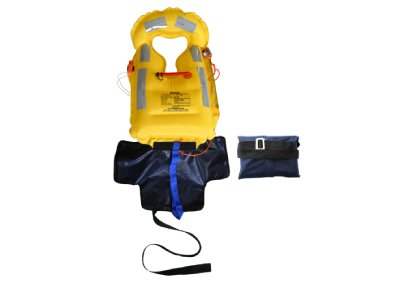
It can only be inflated manually by pulling a toggle.
PFD
There are 2 types-
1. Standard PFDs
The Standard PFD is worn by maximum recreational kayakers, canoers, and stand-up paddleboarders. They look like a vest and depend on flotation material like foams to generate buoyancy. They are labeled as type 3 PFDs and approved by the United States Coast Guard.
2. Inflatable PFDs
Every inflatable PFD has an oral inflation tube in case the carbon dioxide system inflation system fails. However, it may be tough for a weak swimmer to use it while trying to keep their head above water. You cannot wear an approved inflatable PFD if you are not 16 years or older and weigh less than 80 pounds.
Which One Should You Pick?
PFDs are great for long wear and last longer but they don’t offer the same level of protection that life vests do.
So, when there is a high risk of drowning, you surely need a life jacket. On the other hand, if you’re not into extreme water sports, a PFD will do


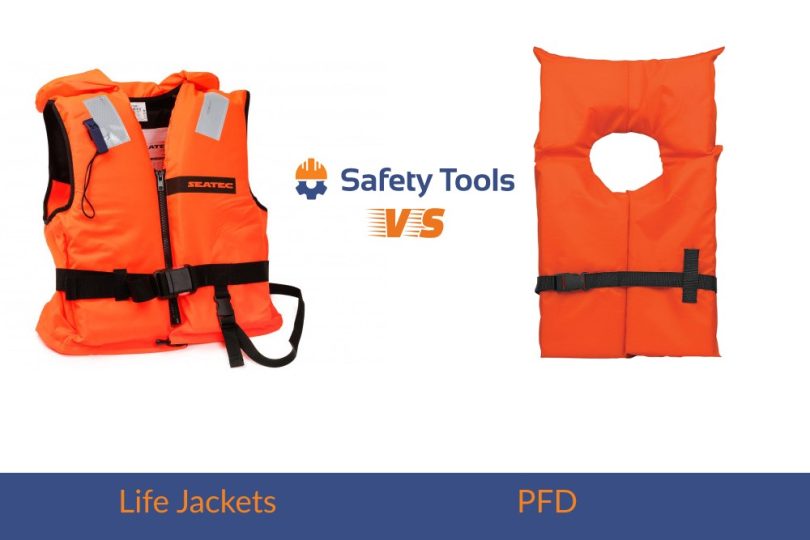

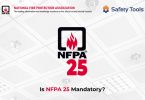
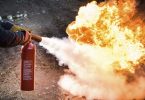


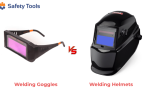
Leave a Comment